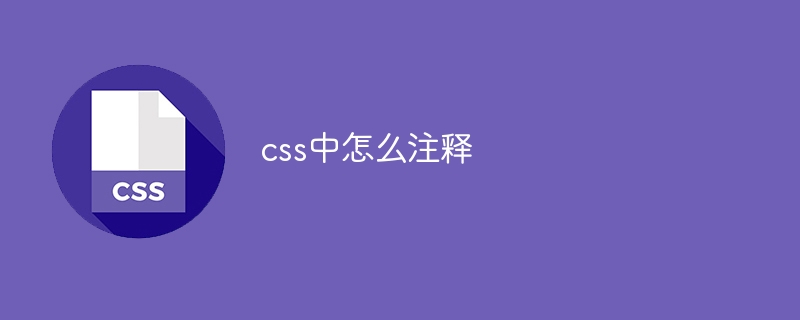Comments in CSS are used to add descriptive text in the style sheet without affecting its style. There are two syntaxes: single-line // and multi-line / */. Comments are widely used to document code, mark important parts, deactivate code, and record changes. Best practices include keeping it simple, placing it wisely, keeping terminology consistent, and avoiding duplication.

Comments in CSS
CSS comments are used to add descriptive text to a style sheet without affect its style. Comments are useful for documentation, explaining the purpose of the code, or marking important sections.
Comment syntax
There are two comment syntaxes in CSS:
-
Single-line comments: Start with two slashes Begins with a bar ( // ) and continues until the end of the line. For example:
// 这是单行注释
Copy after login
- Multi-line comments: starts with / and ends with /. Comment content can span multiple lines. For example:
/*
这是
多行注释
*/
Copy after login
Comment uses
Comments have a wide range of uses in CSS, including:
-
Documentation Transformation code: Explain the purpose and use of CSS code.
-
Mark important parts: Highlight key parts or reminders in the code.
-
Disable code: Temporarily disable a block of code so that it can be tested or debugged.
-
Record changes: Trace changes and updates to CSS code.
Best Practices
When using CSS comments, follow some best practices:
-
Keep Conciseness: Comments should be concise and to the point, providing necessary explanations without being lengthy.
-
Placement wise: Comments should be placed adjacent to the code they describe.
-
Use terminology consistently: Use terminology and formatting consistently to improve the readability of comments.
-
Avoid duplication: Avoid including obvious information in comments, such as the type of a variable or function.
The above is the detailed content of How to comment in css. For more information, please follow other related articles on the PHP Chinese website!

